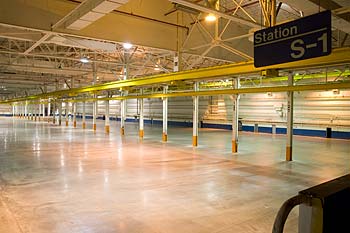By: Deborah Johnson Wood
The potential impact of converting Michigan’s Brownfields into clean energy parks could create some 17,500 short- and long-term jobs and generate some $15 billion in investment.
A groundbreaking study unveiled Tuesday by Michigan State University’s Land Policy Institute (LPI) estimates Michigan’s 44,000 acres of Brownfields could become wind and solar energy parks that could generate enough electricity to power 1.8 million homes—nearly half the homes in the state.
Building the plants could create over 16,000 construction jobs and $1.6 billion in construction wages.
“The key issue is to understand, through a more precise inventory of Brownfields, what the energy creation capacity is,” says Soji Adelaja, LPI director. “Based on this we can determine what needs to be amended in the Brownfields’ current legal structure. It’s possible elements of the Brownfield legal structure could be fast tracked and targeted toward alternative energy.”
 The LPI unveiled the study at Avastar Park in Walker, a Brownfield site consisting of 45 acres and a 750,000-square-foot former Lear factory under redevelopment as several smaller state-of-the-art manufacturing facilities.
The LPI unveiled the study at Avastar Park in Walker, a Brownfield site consisting of 45 acres and a 750,000-square-foot former Lear factory under redevelopment as several smaller state-of-the-art manufacturing facilities.
Adelaja estimates Michigan has 2,400 Brownfield sites similar to the Avastar Park site. Those sites, generally proven to be antiquated behemoths that developers shy away from, could be catalysts in simultaneously ramping up alternative energy production, the development of blighted properties and creation of high-wage jobs.
“Similar sites [to Avastar] have the infrastructure, but we haven’t connected them with the opportunities,” Adelaja says.
That infrastructure includes proximity to existing transmission lines and energy consumers, service from existing transportation systems, and existing financial incentives for revitalizing the properties.
“The new way of converting these sites,” Adelaja says, “is for us to recognize the potential, name the potential sites and let the entrepreneurs decide if it’s something they can develop.”
Source: Soji Adelaja, Michigan State University Land Policy Institute; Andy Guy, Wondergem Consulting
Photo by Brian Kelly
Deborah Johnson Wood is development news editor for Rapid Growth Media. She can be contacted at [email protected].
Enjoy this story?
Sign up for free solutions-based reporting in your inbox each week.